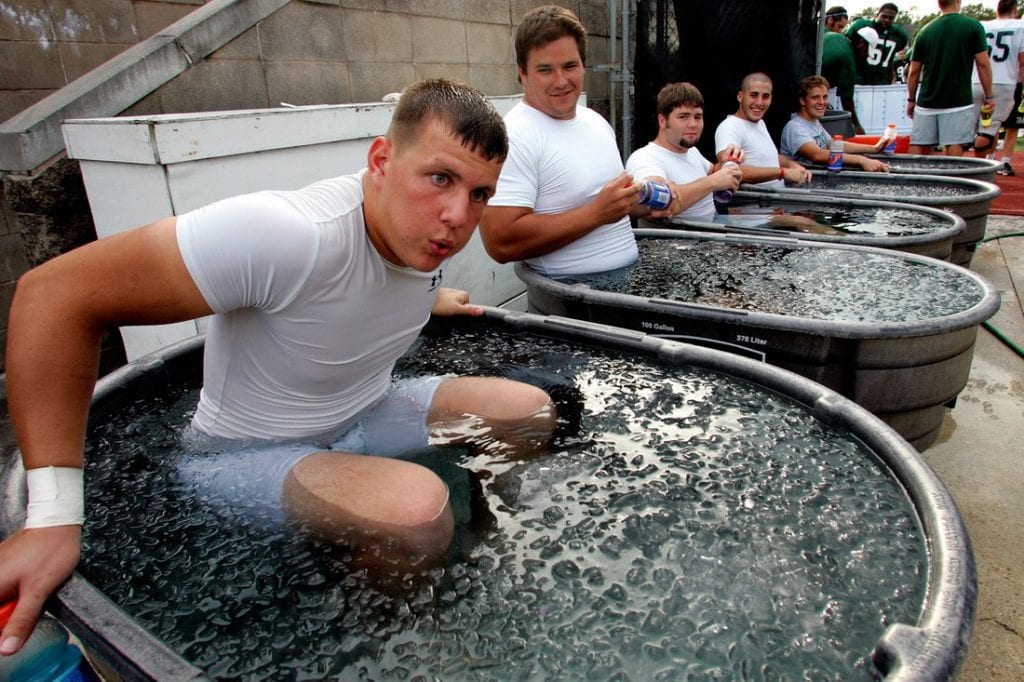Contrast baths, also known as hot and cold immersion therapy, have gained popularity as a therapeutic technique used in sports medicine and physical therapy settings. This technique involves alternating between hot and cold water immersion to provide numerous benefits for recovery, rehabilitation, and injury prevention. In this article, we will explore the concept of contrast baths, their mechanism of action, and their applications in various healthcare settings.
Understanding Contrast Baths
Contrast baths involve alternating immersion in hot and cold water, usually in the form of water baths or showers. The process typically begins with immersing a body part, such as a limb or the whole body, in hot water for a predetermined duration, followed by immersion in cold water for a similar duration. This sequence is repeated several times to achieve the desired therapeutic effect.
Mechanism of Action
Contrast baths are based on the principle of thermoregulatory and vascular responses. The hot water causes blood vessels to dilate, increasing blood flow to the treated area. This enhanced circulation promotes the removal of metabolic waste products, reduces muscle tension, and provides a soothing effect. On the other hand, cold water causes vasoconstriction, leading to reduced blood flow and decreased inflammation. The alternating hot and cold immersion creates a pumping action within the blood vessels, facilitating the removal of accumulated fluids and promoting tissue healing.
Applications in Rehabilitation and Sports Medicine
Contrast baths offer a range of benefits in the field of rehabilitation and sports medicine. Some key applications include:
Muscle Recovery: Contrast baths help accelerate muscle recovery after intense workouts or athletic events. The alternating temperatures promote efficient removal of metabolic waste products, such as lactic acid, reducing muscle soreness and improving recovery time.
Injury Rehabilitation: Contrast baths are commonly used in the rehabilitation of various musculoskeletal injuries, such as sprains, strains, and tendonitis. The thermal contrast aids in reducing inflammation and swelling while also promoting tissue healing and pain relief.
Edema Management: Edema, or swelling, is a common concern following injuries or surgical procedures. Contrast baths can effectively reduce edema by stimulating lymphatic drainage and facilitating fluid reabsorption, leading to improved mobility and faster recovery.
Pain Relief: The alternating hot and cold temperatures of contrast baths have analgesic properties, helping to alleviate pain associated with acute or chronic conditions, such as arthritis, fibromyalgia, and postoperative discomfort.
Guidelines for Contrast Bath Therapy
To ensure safe and effective contrast bath therapy, it is important to follow these guidelines:
Temperature Settings: The hot water temperature is typically set between 100-110°F (38-43°C), while the cold water temperature ranges from 50-65°F (10-18°C). These temperatures can be adjusted based on individual preferences and tolerances.
Immersion Time: The duration of each immersion cycle can vary but is typically around 3-5 minutes. The entire therapy session may consist of 3-5 cycles, alternating between hot and cold immersions.
Precautions: Individuals with circulatory disorders, open wounds, or impaired thermal sensitivity should consult with a healthcare professional before undergoing contrast bath therapy. It is also important to monitor the skin for adverse reactions, such as excessive redness or irritation, during and after the therapy session.
Conclusion
Contrast baths offer a simple yet effective therapeutic modality for enhanced recovery, rehabilitation, and injury prevention. By utilizing the principles of thermoregulation and vascular response, this therapy can promote improved blood circulation, reduce inflammation, manage edema, and provide pain relief. However, it is crucial to follow proper guidelines and consult with healthcare professionals to ensure the safe and effective implementation of contrast bath therapy.
